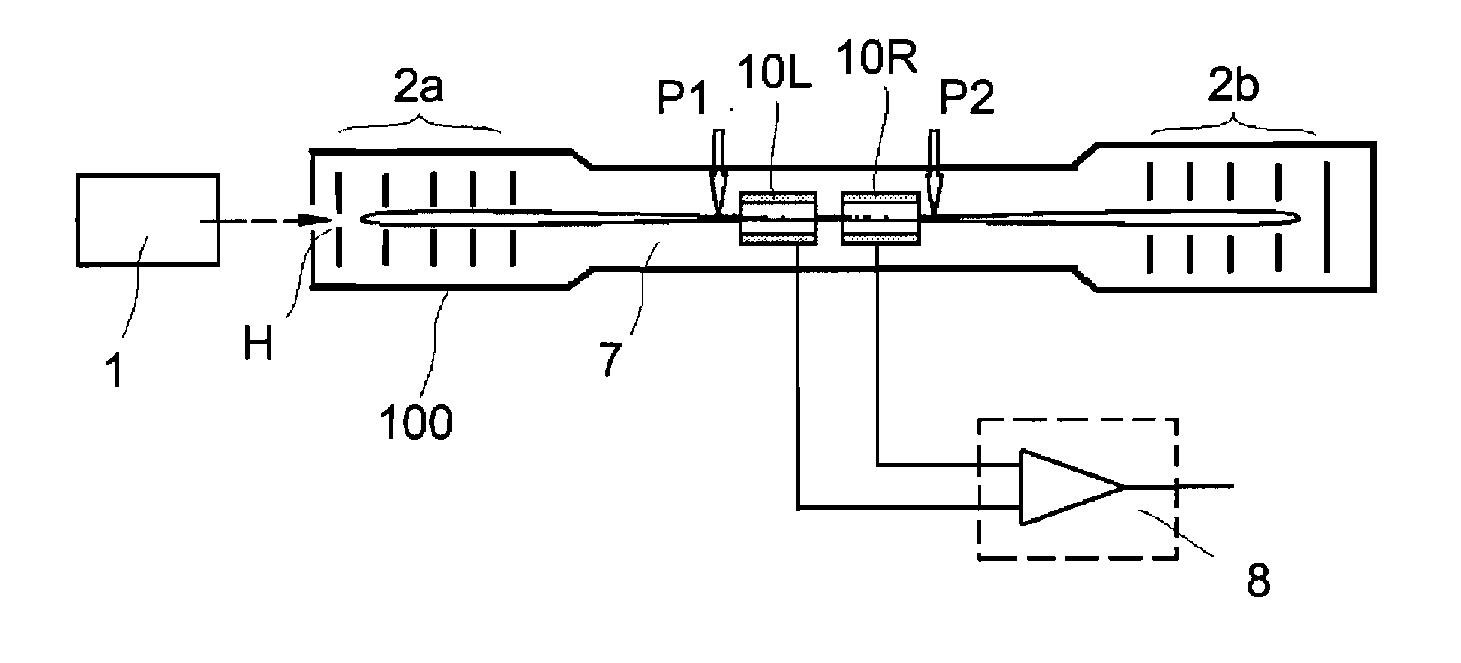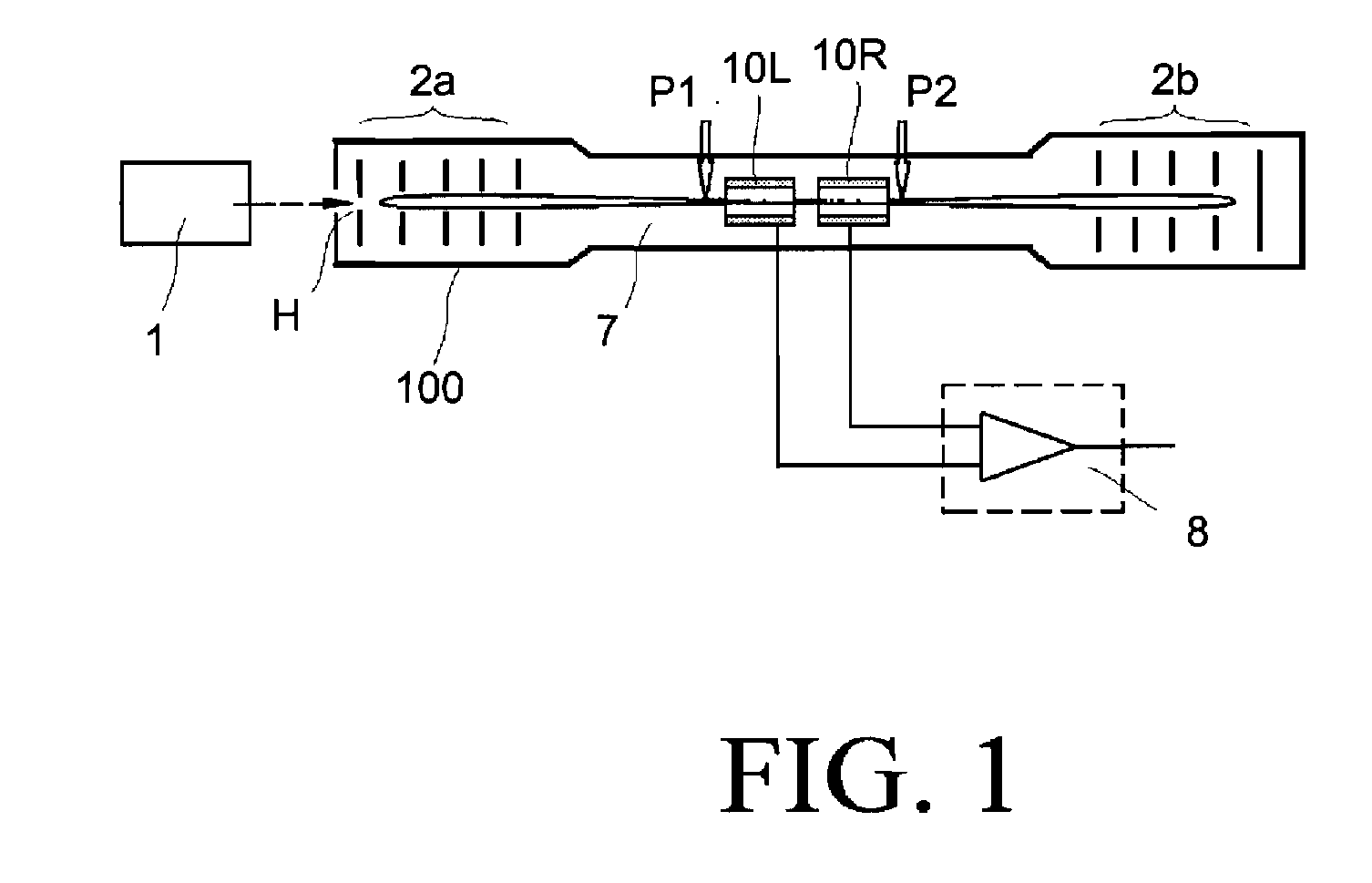Mass analyzer
- Summary
- Abstract
- Description
- Claims
- Application Information
AI Technical Summary
Benefits of technology
Problems solved by technology
Method used
Image
Examples
Embodiment Construction
[0036]First, a basic structure of a reciprocating multi-reflection flight tube is used to describe an analyzer according to an embodiment of the present invention.
[0037]A flight tube 100 in FIG. 1 includes two opposite reflectors 2a and 2b, a pulsed ion beam Ib generated by the pulsed ion source 1 can be introduced through a small hole H in the end electrode of the reflectors. After ions are introduced, some electrode voltages in the reflectors 2a should be restored to voltage values of normal reflective mode. In this way, the ions can be reflected continuously between the two reflectors.
[0038]For a positive ion mode, positive voltages need to be applied on some electrodes in the reflectors. The electric potential in the reflectors may be as high as thousands of volts or tens of thousands of volts relative to a drift space 7, so that the ions have kinetic energy ranging from thousands of electron-volts to tens of thousands of electron-volts when reflected to the drift region 7. The ...
PUM
 Login to view more
Login to view more Abstract
Description
Claims
Application Information
 Login to view more
Login to view more - R&D Engineer
- R&D Manager
- IP Professional
- Industry Leading Data Capabilities
- Powerful AI technology
- Patent DNA Extraction
Browse by: Latest US Patents, China's latest patents, Technical Efficacy Thesaurus, Application Domain, Technology Topic.
© 2024 PatSnap. All rights reserved.Legal|Privacy policy|Modern Slavery Act Transparency Statement|Sitemap



